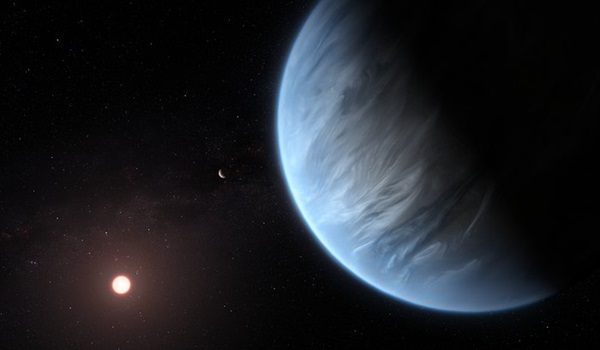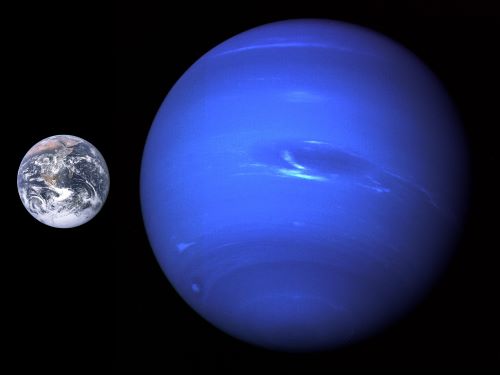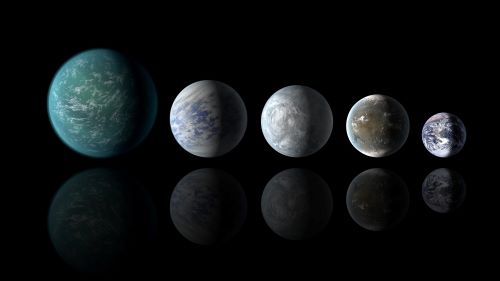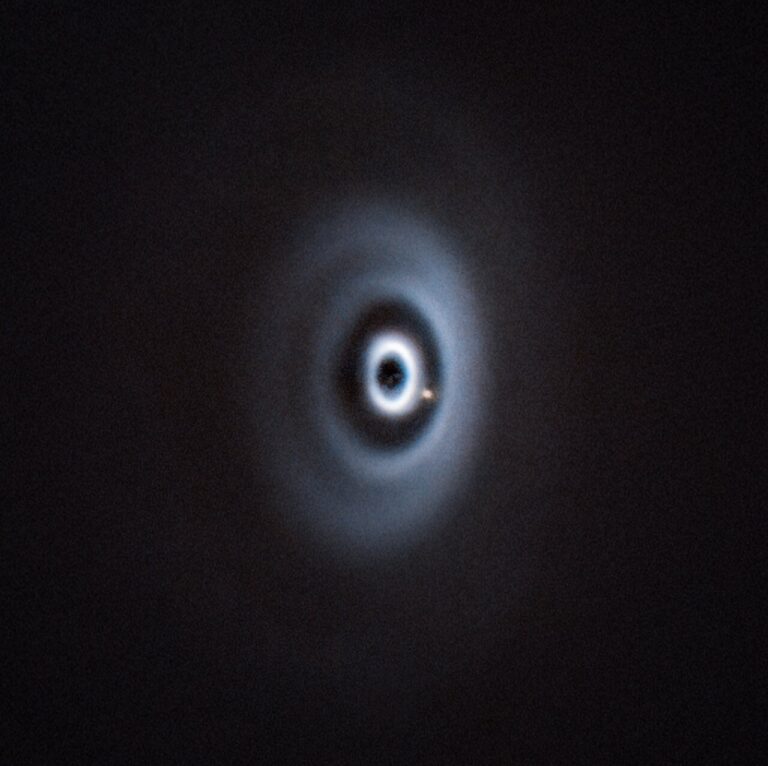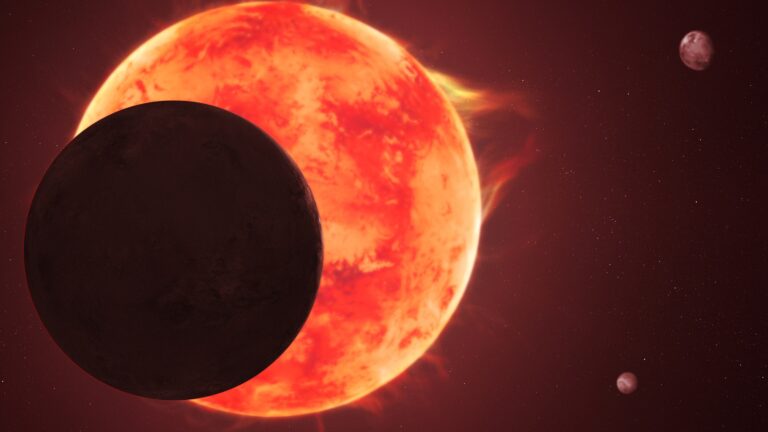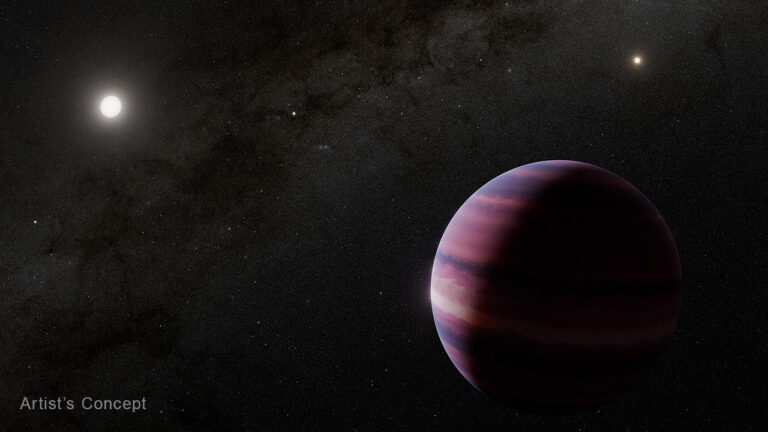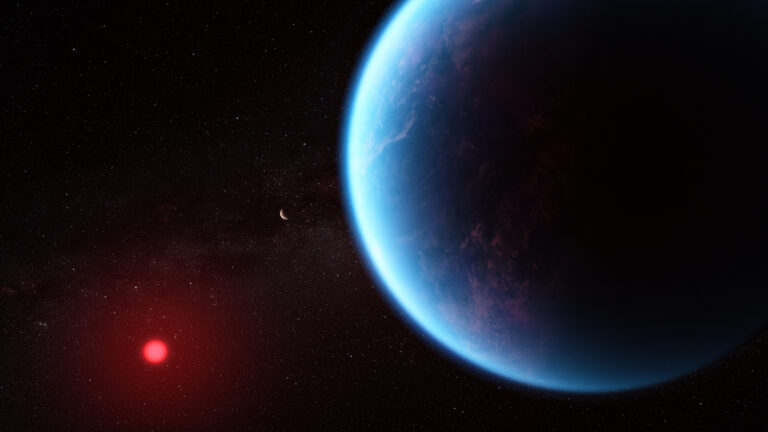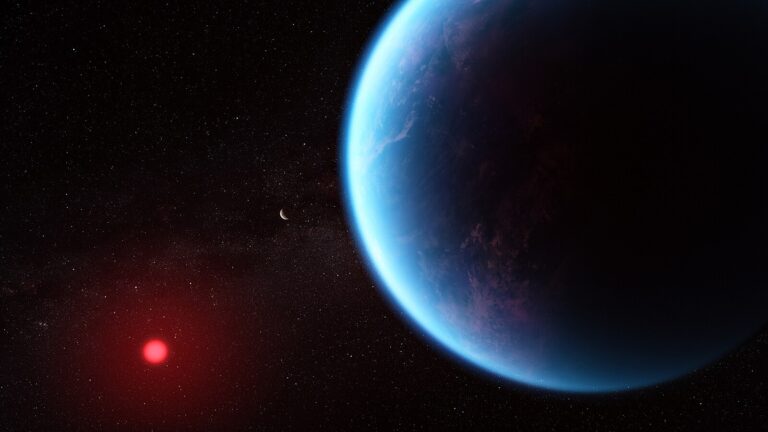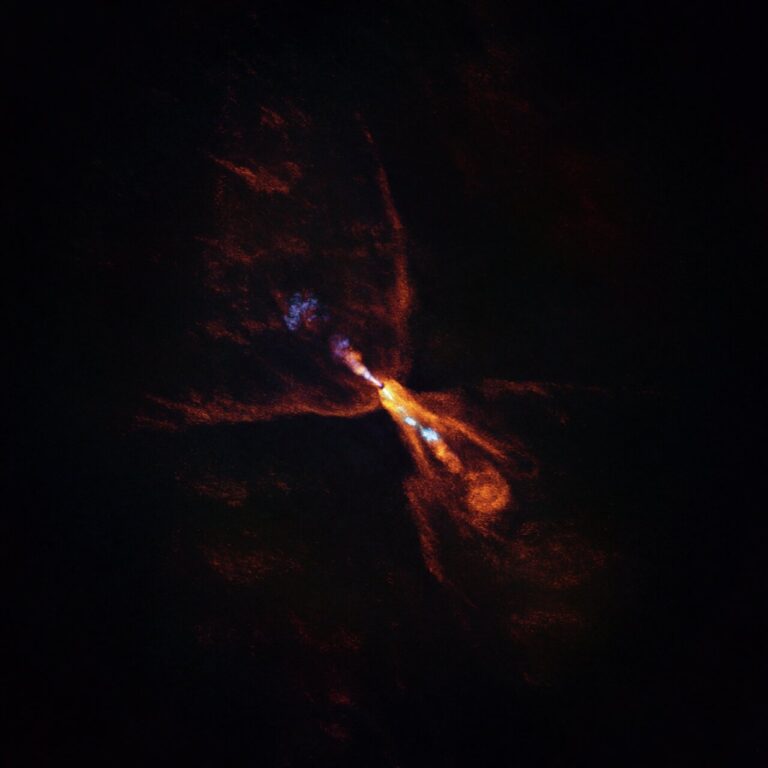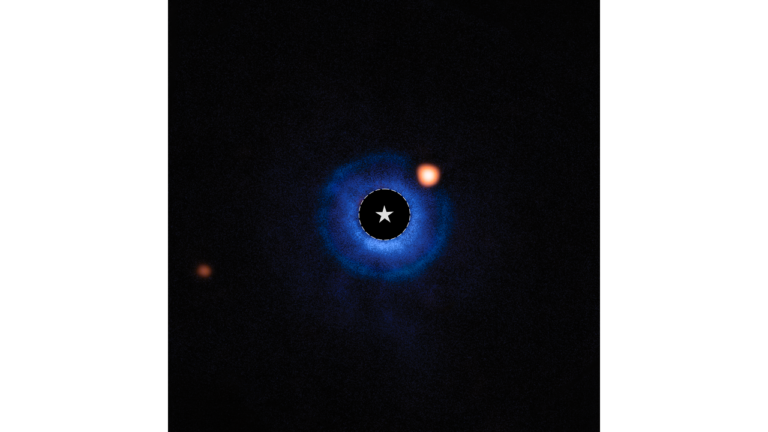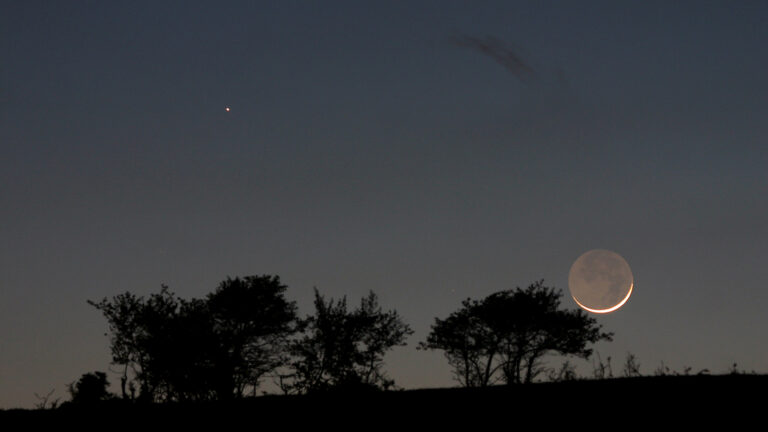Key Takeaways:
As more and more confirmed exoplanets roll in, one thing is clear: The Sun is not orbited by every type of planet that exists. Our solar system basically has two flavors of planet — rocky and gassy. The inner planets make up the former group, and the outer planets make up the latter. But in recent decades, astronomers are finding a lot of worlds that break that familiar mold.
Astronomers general consider super-Earths to be exoplanets that have up to about four times the mass of Earth and a radius up to about 1.6 times that of Earth. But because there’s been such a wide variety of planets found around other stars, the exact definition of a “super-Earth” is still largely debated.
To muddy things further, mini-Neptunes are what astronomers usually call planets that have masses several to 10 or more times that of Earth (Neptune is about 17 times the mass of Earth), plus a radius more than 1.6 times that of Earth. The assumption was that even the smallest of these mini-Neptunes are too girthy to be rocky worlds, so they were thought to be made of mostly hydrogen and helium, like a normal gas giant.
“In the community, there was this stance that we were really looking at two populations [super-Earths and mini-Neptunes],” Jérémy Leconte, an astrophysicists at the French National Centre for Scientific Research (CNRS) and coauthor of a new paper on the topic, tells Astronomy. But without an easy way to directly capture images of either type of planet, the exact dividing line remained fuzzy.
Now, based on Leconte’s and others recent work, it’s starting to look like super-Earths and small mini-Neptunes might be two versions of nearly the same thing.
On June 15, scientists at the Laboratoire d’Astrophysique de Marseille published a paper in The Astrophysics Journal Letters that suggests mini-Neptunes don’t have to rely on hydrogen and helium for their fluffy compositions. Instead, the study claims, mini-Neptunes could be irradiated ocean worlds with dense, rocky cores and ultrathick atmospheres of water.
Such an atmosphere, the researchers says, could be the result of an intense greenhouse effect caused by the rocky planet’s fiery host star boiling water from its surface. Such a scenario, the study suggests, could keep the planet’s mass in check, while also greatly increasing its radius.
Furthermore, Leconte’s recent work, published June 9 in Astronomy & Astrophysics, focuses on how host stars can irradiate the surfaces of a rocky, water-rich exoplanets. This process, the research suggests, can indeed create an expansive atmosphere that balloons a solid rocky world into what looks like a shrunken gas giant.
The greenhouse effect
Despite a bad reputation, the Earth is kept warm thanks to the greenhouse effect. Basically, when the Sun’s energy passes through Earth’s atmosphere, some of it gets reflected back into space, but the rest makes it through to the ground. Earth’s surface then leeches out some of that solar energy in a different form, which happens to be largely trapped by Earth’s blanket of greenhouse gases.
But this process can get out of control. If you were to take Earth and put it as close as Venus is to the Sun, our planet would become too hot and our oceans would vaporize. The resulting atmospheric envelop of water vapor created by the boiling oceans would then trap more heat, exacerbating the problem. (This runaway greenhouse effect is thought to be what happened to Venus long ago.)
“But what is interesting in this scenario is, because of the greenhouse effect of water, basically when you do that, the temperature inside this atmosphere [would be] huge,” explains Leconte. “[This] envelope of water would be so hot [and pressurized] that it becomes supercritical.”
A supercritical fluid is a special state of liquids and gases that’s attainable if the pressures and temperatures are high enough. Essentially, in this state, the transition between the gas and liquid phases no longer exists.
And if a runaway greenhouse effect can indeed turn a rocky super-Earth into a deceptive mini-Neptune, then such supercritical atmospheres may be rather common on the 4,000-plus exoplanets discovered so far.
What does this mean for exoplanets?
“What’s interesting is that these mini-Neptunes are something we don’t have in the solar system,” says Leconte. “But we know that they are the most common type of planets out there when we look at the statistics of exoplanets.” (However, it’s important to note that current exoplanet searches suffer from observational biases.)
Not having an example of a mini-Neptune to point to in our solar system makes unlocking the mysteries of these planets more complicated. In order to determine how many, if any, exist with both water-rich atmospheres and rocky cores, scientist must closely study them using a technique called transit spectroscopy.
Transit spectroscopy works by closely watching when a planet passes in front of its host star. As it does, the light from the star passes through the planet’s atmosphere, where molecules within the atmosphere leave on imprint on the starlight that makes it through. So, when we look at the spectra of that starlight, we can determine what parts are missing due to absorption by atmospheric molecules. This helps us piece together the chemical composition of the planet.
Finding evidence on one of these potential water-rich mini-Neptunes would open the door to understanding how these unique planets — whether hydrogen- and helium-rich, water-rich, or both — form and evolve around their host stars.
Currently, the Hubble Space Telescope is only able to look at the largest and hottest planets, or hot Jupiters. But when the James Webb Space Telescope (JWST) launches in late 2021, it will be capable of detecting or following up on smaller and colder planets, like mini-Neptunes.
Still, JWST won’t be a dedicated mission for uncovering the compositions of exoplanets, and its observing time will be fiercely competed for. Thankfully, the European Space Agency has its own mission planned that will be entirely dedicated to studying exoplanets to learn how they form and evolve. Following its scheduled launch in 2028, the Atmospheric Remote-sensing Infrared Exoplanet Large-survey (ARIEL) will kick off a four-year survey that aims to closely scrutinize about 1,000 exoplanets.

